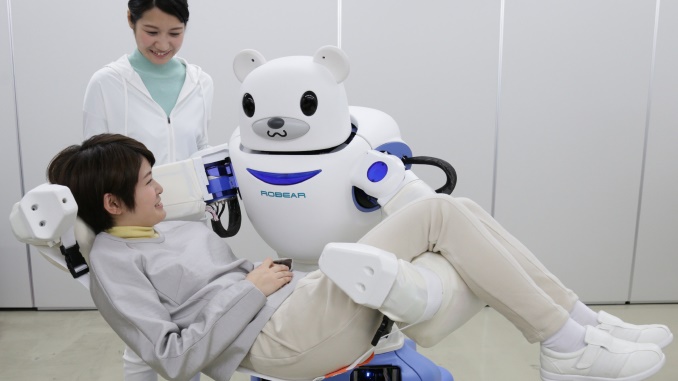
Introduction
Each decade since the 1970’s it has been said that, in 10 years time people working with robots would be common place in both industry and at home. Although the question of why this hasn’t happened yet is being continually asked, the answer has changed over the years. With the development of new engineering techniques, miniaturisation of electronics and the increase of computing power, designers are now at the stage where a robot system is capable of performing useful cooperative tasks with human users. However, the problem which designers now face, and for which the deployment of robot systems is being impeded, is that of safety.
Safety implications have always been a concern for robot designers and traditionally the solution has been to prevent the user coming into contact with the robot, by means of physical barriers. For personal robots to become a reality these barriers will need to be removed and more dynamic flexible safety methods introduced.
The study of Human-Robot Interaction (HRI) aims to remove these barriers and allow humans and robots to work together cooperatively to perform useful tasks. Generally speaking robot systems that could perform HRI tasks would be considered as safety-critical complex systems, due to physical size, functionality, behaviour and potential to cause damage to its surroundings.
Background
Early research [1] into the safety of personal robots suggested that industrial robots could be adapted and used to perform human-robot interactive (HRI) tasks. However, as Alami et al. [2] discusses, it is not feasible to take a large rigid robot and adapt it to the delicate tasks necessary for a personal robot. At present, the main method for making robots safe is to prevent people from stepping into the working area of the robot. This approach, developed by manufacturing industries, maintains a clear space around the robot. Access is prevented by means of physical barriers and proximity sensors, which halt the robot on activation [3]. It is apparent that if robots are to interact directly with humans, a new approach to safety is needed.
All industries, which require the development of safetycritical systems, have strict processes and standards which must be followed before the system can be put into service. However, as discussed by Desantis et al. [4] and Kulic and Croft [5], there are still no safety standards for complex robots for use in cooperative situations with humans.
One objective of robot design, which every engineering designer strives to achieve, is that of intrinsic safety. Intrinsic safety is the property that a system cannot inherently cause a hazard, even if it fails or malfunctions. In robotics there are a number of well established intrinsic safety techniques [6], [7]:
Actuators with limited power/speed which guarantee safe behaviour in case of a fault
De-energised brakes, which halt the robot in the event of a power failure
The use of a ‘dead man’s switch’, which must be engaged in order for the robot to operate
Although an intrinsically safe design is what designers aim to achieve, it can be difficult to prove this for a complex system by means of testing. Therefore, designs which are said to be intrinsically safe, are generally functionally and physically simple.
References
[1] Kulic, D. and E. Croft (2006), “Real-time safety for human-robot interaction.” Robotics and Autonomous Systems, 54(1), 1-12.
[2] Alami, R., A. Albu-Schaeffer, A. Bicchi, R. Bischoff, R. Chatila, A. De Luca, A. De Santis, G. Giralt, J. Guiochet, G. Hirzinger, F. Ingrand, V. Lippiello, R. Mattone, D. Powell, S. Sen, B. Siciliano, G. Tonietti, and L. Villani (2006), “Safe and dependable physical human-robot interaction in anthropic domains: State of the art and challenges.” Proc. IROS’06 Workshop on pHRI – Physical Human- Robot Interaction in Anthropic Domains.
[3] Ogorodnikova, O. (2008), “Methodology of safety for a human robot interaction designing stage.” 2008 Conference on Human System Interaction, 452-457.
[4] Desantis, A., B. Siciliano, A. Deluca, and A. Bicchi (2008), “An atlas of physical human robot interaction.” Mechanism and Machine Theory, 43, 253-270.
[5] Kulic, D. and E. Croft (2003), “Strategies for safety in human-robot interaction.” Proc. IEEE Int. Conf. on Advanced Robotics, 810-815.
[6] Wyrobek, Keenan A., Eric H. Berger, H. F. Machiel Van der Loos, and J. Kenneth Salisbury (2008), “Towards a personal robotics development platform: Rationale and design of an intrinsically safe personal robot.” ICRA, 2165-2170. 38.
[7] E. Dombre, F. Pierrot G. Duchemin L. Urbain, Ph. Poignet (2001), “Intrinsically safe active robotic systems for medical applications.” Proceedings of IARP/IEEE-RAS Joint Workshop on Technical Challenge for Dependable Robots in Human Environment.
